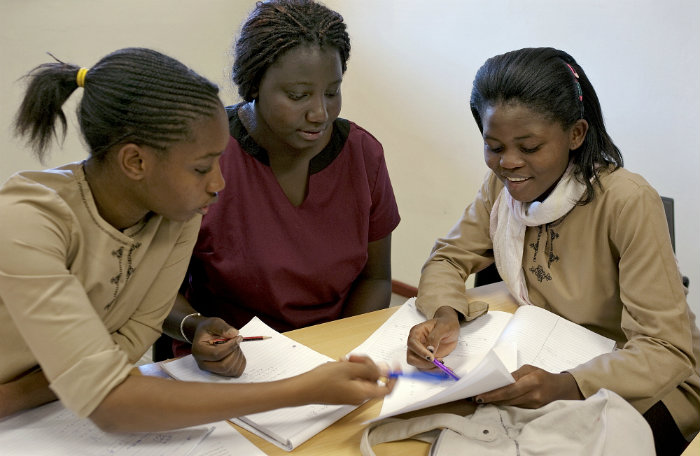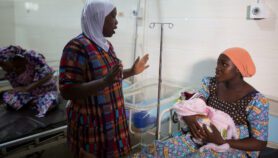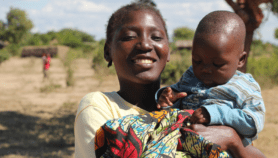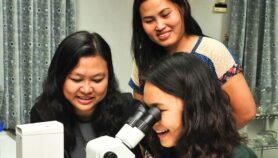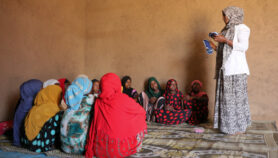By: Linda Nordling
Send to a friend
The details you provide on this page will not be used to send unsolicited email, and will not be sold to a 3rd party. See privacy policy.
Just 10 per cent of African science academy members are women. It’s time governments act, writes Linda Nordling.
A woefully low proportion of members of the world's learned bodies and science academies are women, and African academies fare particularly badly.
A report published by the Academy of Science of South Africa (ASSAf) in collaboration with the InterAcademy Partnership and launched on 29 February puts the figure at 12 per cent. [1] It assessed 69 national academies, including 11 in Africa: Cameroon, Egypt, Ethiopia, Ghana, Kenya, Morocco, Nigeria, South Africa, Sudan, Tanzania and Uganda.
Among the African academies that participated in the survey, the mean proportion of women members was even lower — ten per cent.
But the tally varies wildly between individual academies. South Africa’s ASSAF comes in at 24 per cent, making it one of the most women-friendly academies in the world. But at just four per cent, Tanzania’s Academy of Sciences comes in last, a position it shares with Poland.
The report recommends ways academies should promote greater gender parity. These include collecting annual data on women’s membership and establishing permanent structures to promote the role of women — not just within the academy but also more broadly across science, technology and innovation.
However, many of Africa's (mostly poorly funded) academies will struggle to implement these recommendations, even if their leaders want to. Better support for academies, and for research more widely, is therefore crucial to achieving better gender balance in African science.
Shocking mismatch
One thing is certain: the problem is not that there aren’t enough women scientists. Across the world, the proportion of women in science is vastly bigger than the proportion of women on the academies. So why is that?
Many blame childcare and family responsibilities for the dearth of women that reach the highest echelons of academic institutions.
“One thing is certain: The problem is not that there aren’t enough women scientists.”
Linda Nordling
But is that really all there is to it? Evidence paints a much more complex, and more alarming picture. In the United Kingdom, for instance, just six per cent of members of the Royal Society are women, but they hold 18 per cent of the country’s professorships, according to Nature magazine [2]. The picture is more or less the same across the whole of Europe.
In Africa, it is difficult to find data on the numbers of professorships held by women. However, the disparity between the ratio between men and women scientists generally, and that found in the academies, mirrors the trends found in Europe and elsewhere. For instance, Ugandan women make up 24 per cent of the country's scientists overall, but only 13 per cent of the Uganda National Academy of Sciences’ membership are women.
And in South Africa there is near parity between men and women in research jobs across the board. Against that background, 24 per cent women in the academy is “not a number to be proud of”, said Daya Reddy, president of ASSAf, at the report’s launch in Hermanus, South Africa.
Is patriarchy the problem?
So what else is holding back women from attaining academy membership? Is there something a bit conservative and patriarchal about the academy as an institution?
Given that the seeds of the national academies we have today were planted several hundred years ago, when women were excluded from most spheres of public life, there may be a grain of truth in this. Moreover, the focus most academies have on rewarding ‘excellence’ may unintentionally skew membership against women.
For, what constitutes excellence? And does the ‘system’ give equal chances to attain it for women as for men?
Tonya Blowers, coordinator of the Organization for Women in Science for the Developing World (OWSD) based in Italy, says the system favours men. She likens the situation to getting on the property ladder in an expensive city.
Improving gender balance
However, some academies have managed to improve their gender balance through targeted action. South and Central American academies are among the most gender-balanced academies in the world.
The Brazilian Academy of Sciences has a working group on women in science. The Cuban Academy of Sciences, which at 27 per cent has the highest proportion of women in the world, has had such a group since 1999. These don’t just promote women entering the academy, but also promote women in science more broadly.
The report recommends that all science academies should form committees or bodies like these. However, many African academies don’t even have permanent secretariats. This makes it extremely difficult for them to implement any policies, let alone ones that try to change the culture of the institution.
What is needed is more government support for Africa’s academies. There is no doubt that academies play an important role in representing the scientific community to governments, and presenting them with advice on scientific matters. Therefore, African governments should support their academies. It does not have to be much — just enough to staff a secretariat and manage the academy’s activities.
Even simply establishing a network of female scientists would be a step in the right direction towards recognising women’s scientific contributions. Such networks would provide up-and-coming women with role models and support, perhaps helping them onto that crucial first rung of the ladder.
Journalist Linda Nordling, based in Cape Town, South Africa, specialises in African science policy, education and development. She was the founding editor of Research Africa and writes for SciDev.Net, Nature and others.
This piece was produced by SciDev.Net’s Sub-Saharan Africa English desk.
References
[1] Women for science: inclusion and participation in academies of science (Academy of Science of South Africa [ASSAf], October 2015)
[2] Elizabeth Gibney Women under-represented in world’s science academies (Nature, 29 February 2016)


